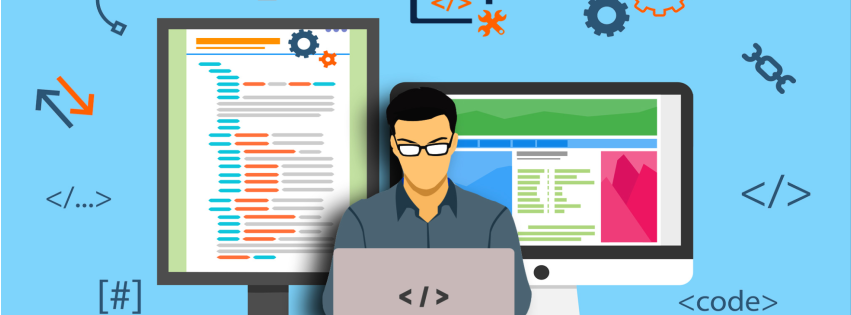 This post is part of the Web Developer Playbook series, which are created to provide examples, best practice, and suggestions for designing and building web services. I will be using libraries from the JavaScript ecosystem (e.g., Node.js, React.js) in all my examples.
This post is part of the Web Developer Playbook series, which are created to provide examples, best practice, and suggestions for designing and building web services. I will be using libraries from the JavaScript ecosystem (e.g., Node.js, React.js) in all my examples.
Linked list is like an array but more flexible. Elements in an array are stored contiguously in memory while linked lists are stored as nodes with two fields: current value and a pointer to the next thing in the list. We are going to implement linked list in JavaScript and go over some algorithms with the linked list.

We are going to go over a set of coding and whiteboard problems that would be asked during a coding interview. I’m drawing these problems from LeetCode and Cracking the Coding Interview. They are a sample of the medium and hard problems that require a bit of thinking and and familiarity with some fundamental data structures in computer science.

When I work at my federal job on a close intranet network, we often had to access information from different databases and filesystems through custom or share point websites which did not have the best user interface. It was a pain point for me and many of my colleagues. I decided to make a set of single page applications (SPAs) with nicer UX for querying the databases and file systems.

Object Oriented Programming (OOP) is a software design pattern that allows you to think about problems in terms of objects and their interactions. OOP is typically done with classes or with prototypes. Most languages that implement OOP (e.g., Java, C++, Ruby, Python) use class-based inheritance. JavaScript implements OOP via Prototypal inheritance. In this article, I’m going to show you how to use both approaches for OOP in JavaScript, discuss the advantages and disadvantages of the two approaches of OOP and introduce an alternative for OOP for designing more modular and scalable applications.

What I love most about programming is the problem solving. I don’t believe anyone is born with problem solving skills. It’s a muscle that is built and sustained by repeated exercise. Like any exercise, there’s a set of guidelines to help you be more effective at developing your problem solving muscles. I will introduce 5 of the most important software design principles that have guided my problem solving process and show you how to apply these principles to solve a real problem.


JavaScript is one of the most popular and versatile languages today, but when Brandon Eich first created JavaScript in 1995, it was not recognized as a general purpose programming language. JavaScript only ran in the browser and was primarily used to enhance the user interfaces of website (e.g., animation, effects upon hover), thus tightly coupled with the Data Object Model (DOM). In recent years, JavaScript has gotten a lot more useful as a general purpose language as it can be run independently from the DOM and browser. Additionally, JavaScript has also has gotten very sophisticated with the introduction of ES6 and ES7. With that, let’s take a look at how JavaScript can be used to solve fundamental problems in computer science. Specifically, let’s look at how to write algorithms and leverage data structures to help us solve problems using JavaScript.
